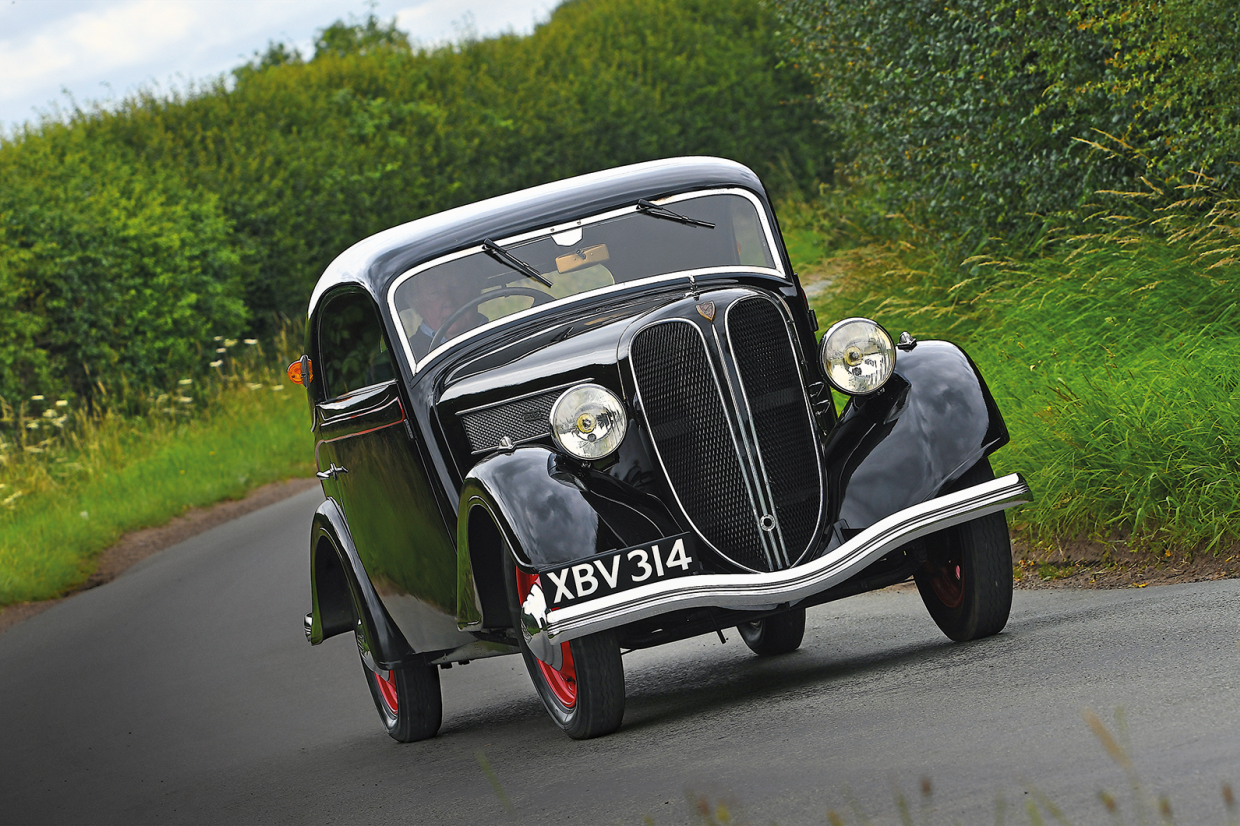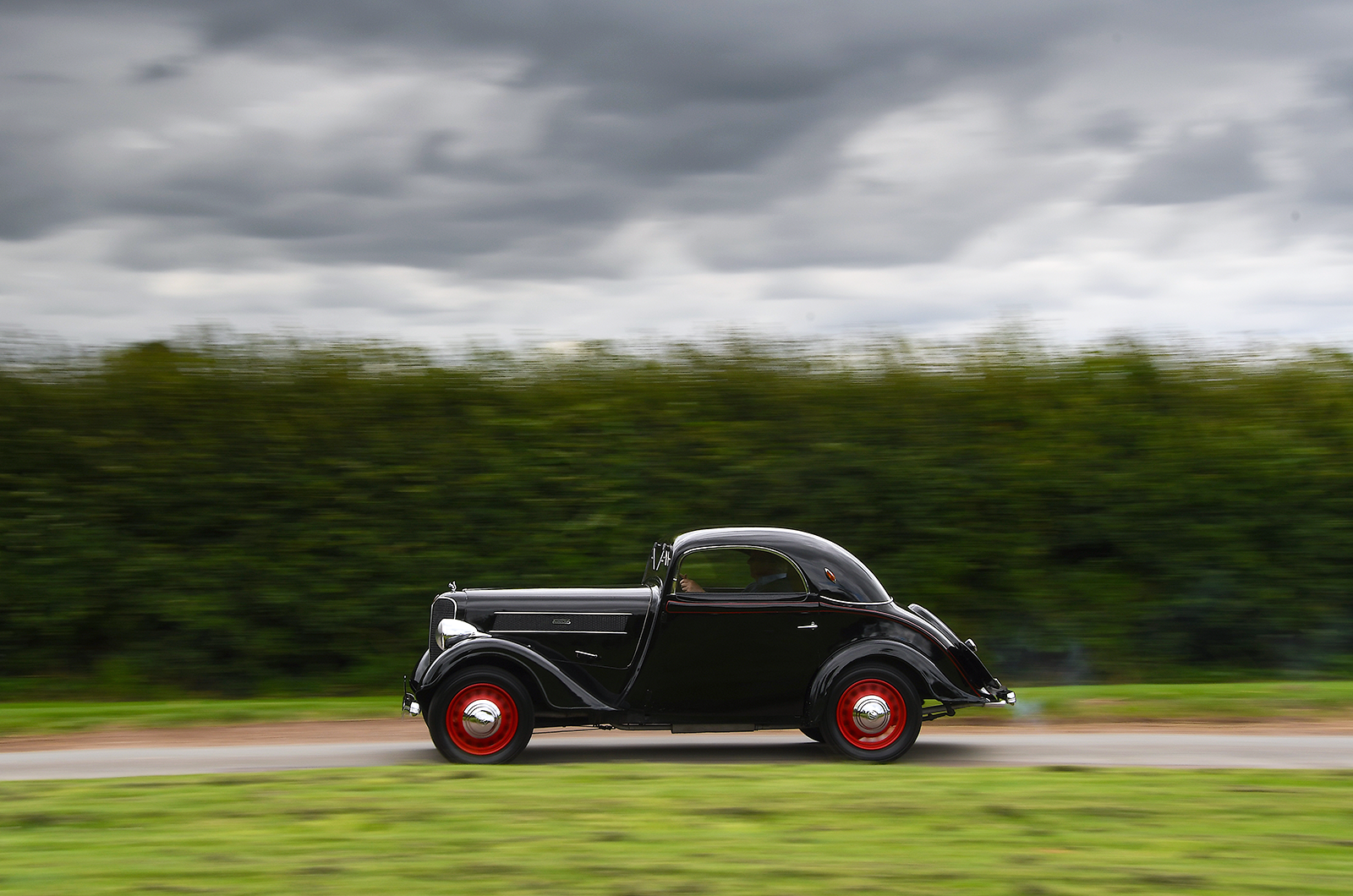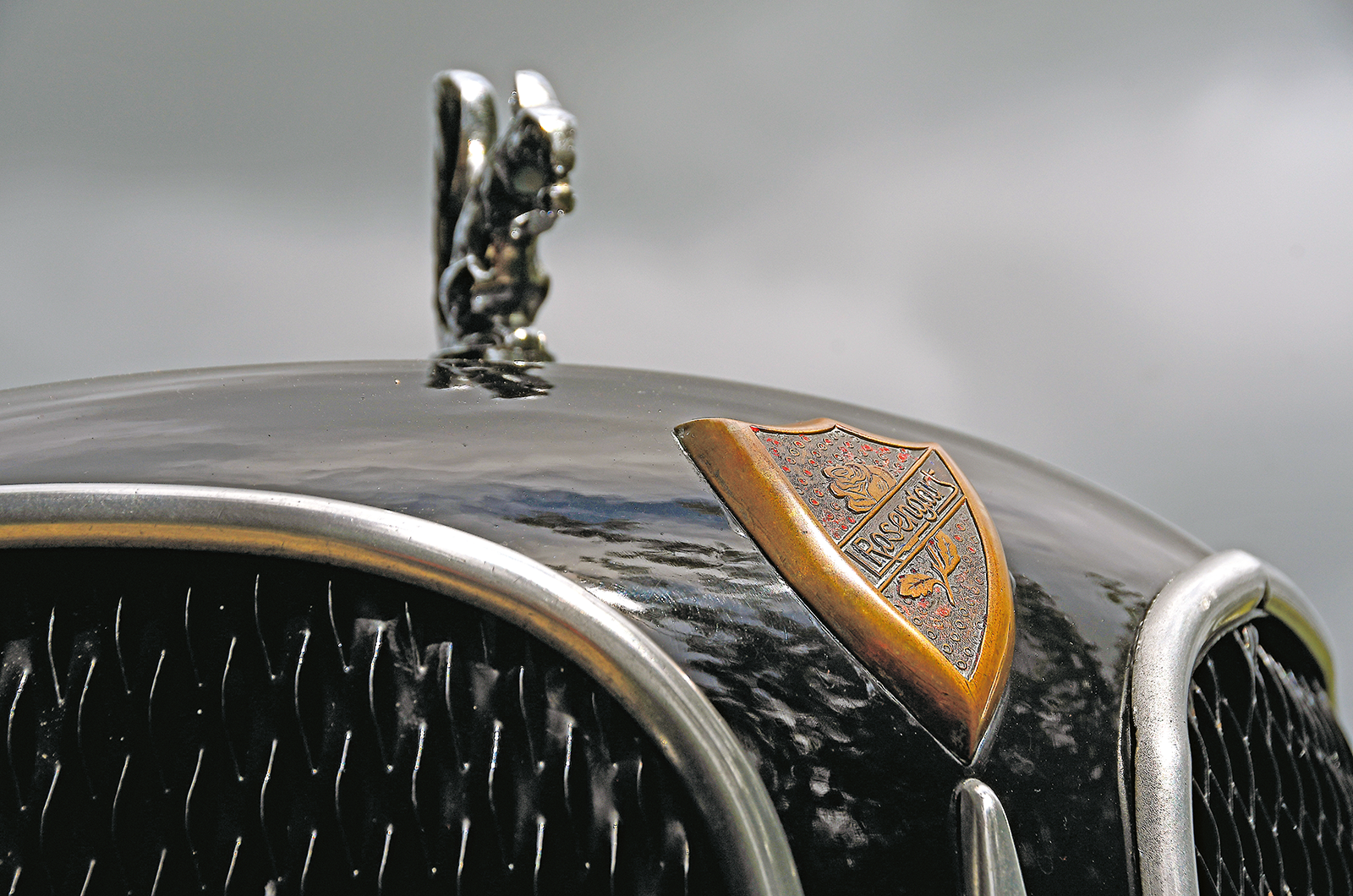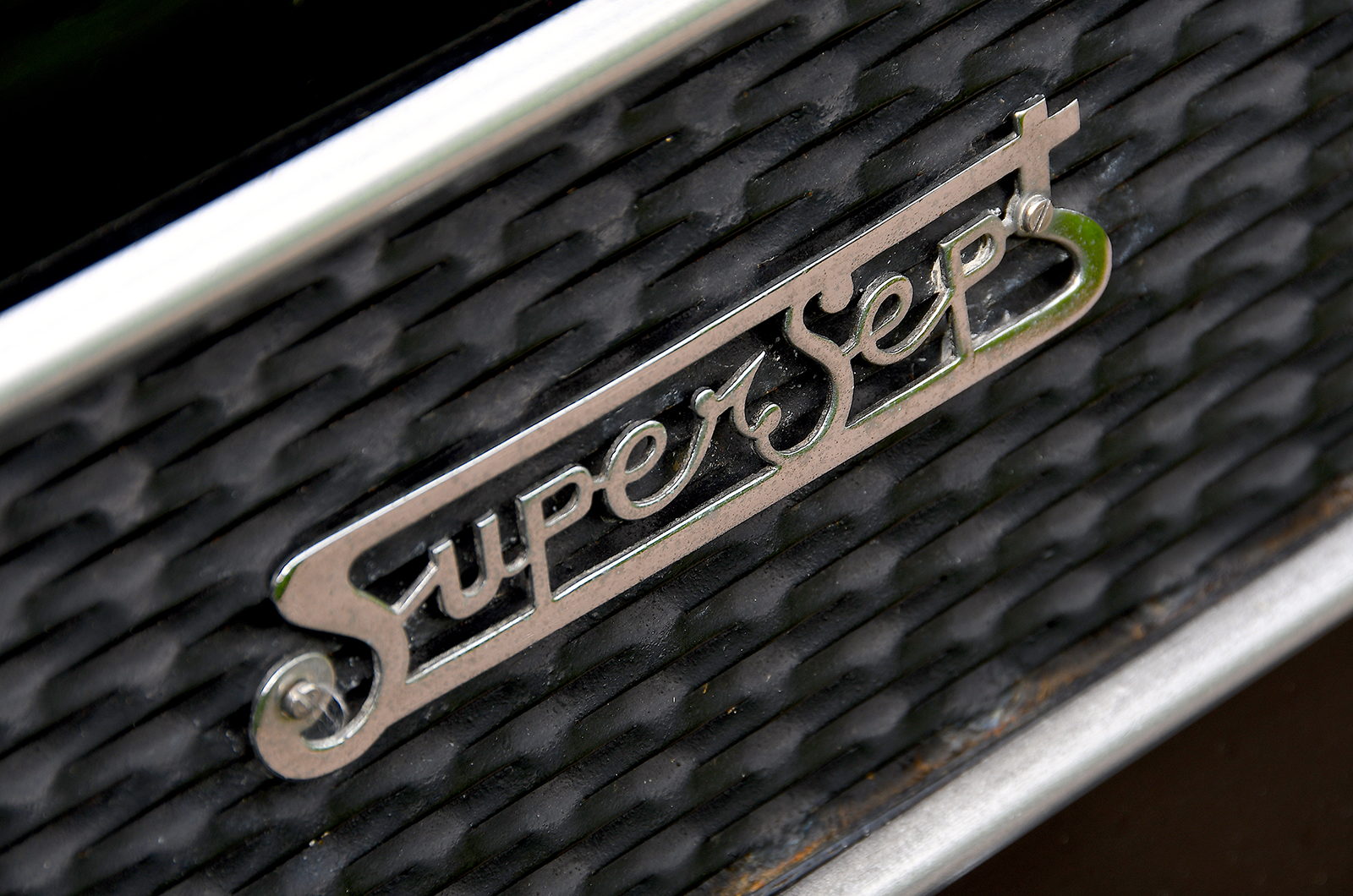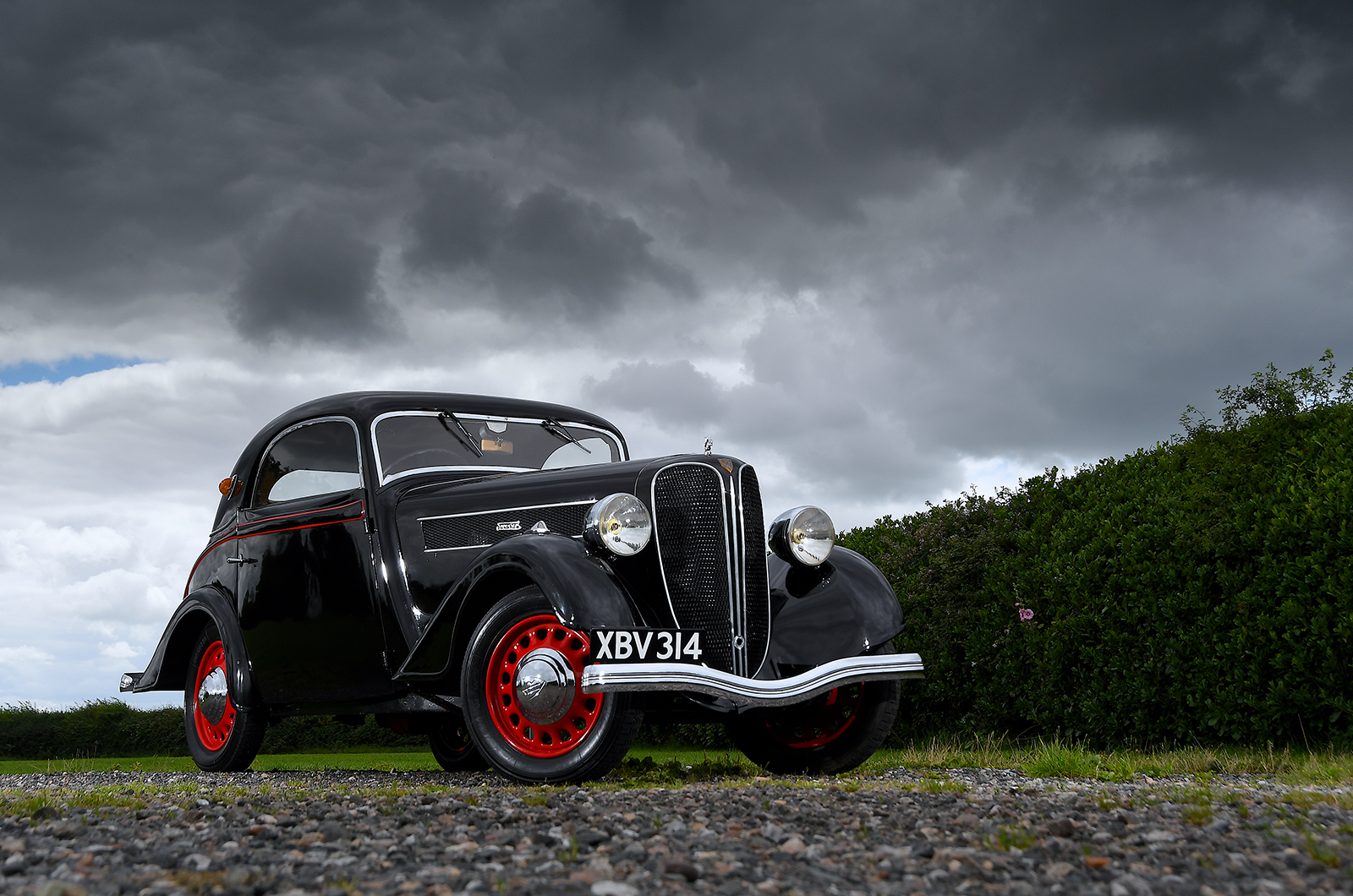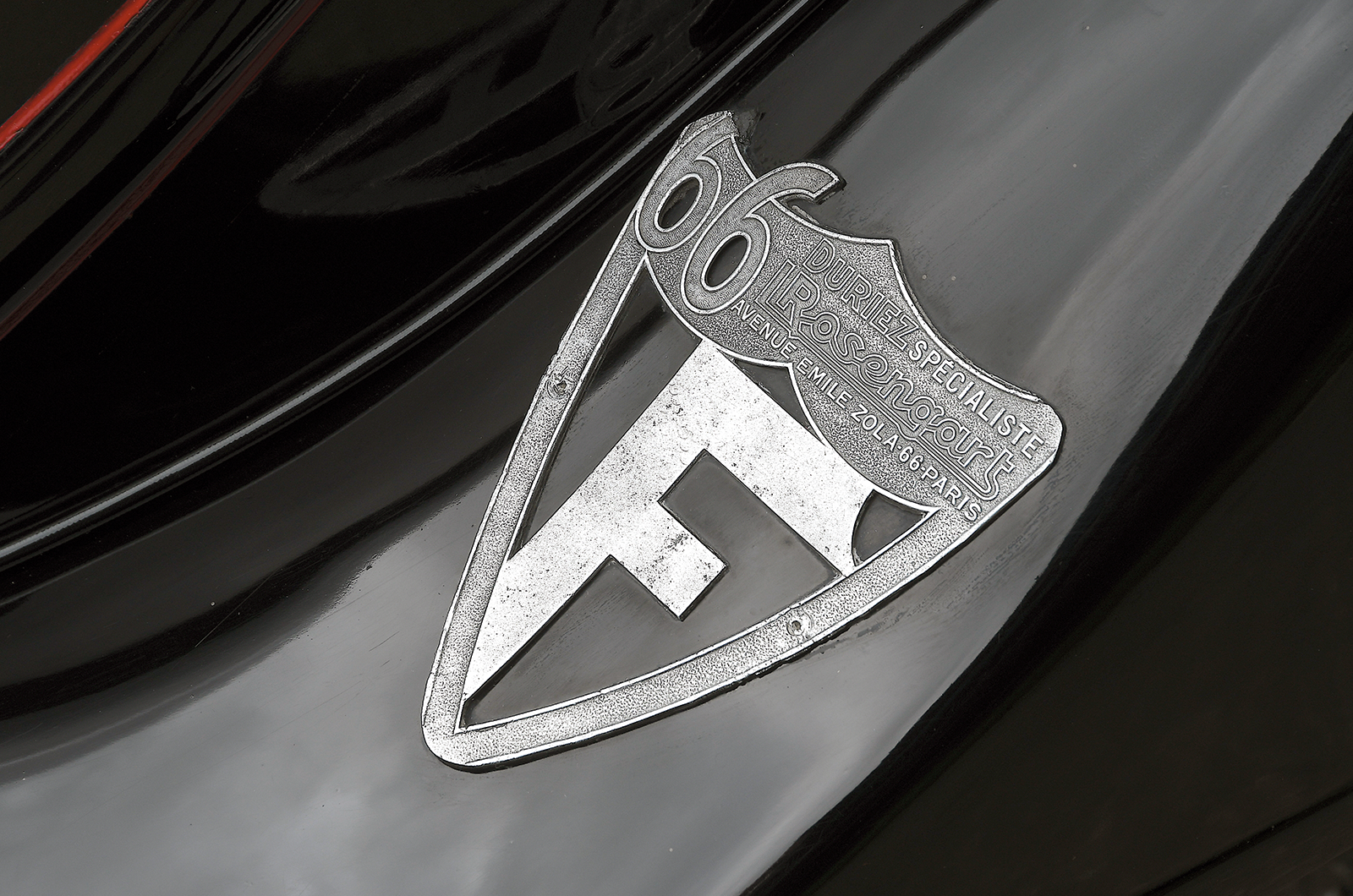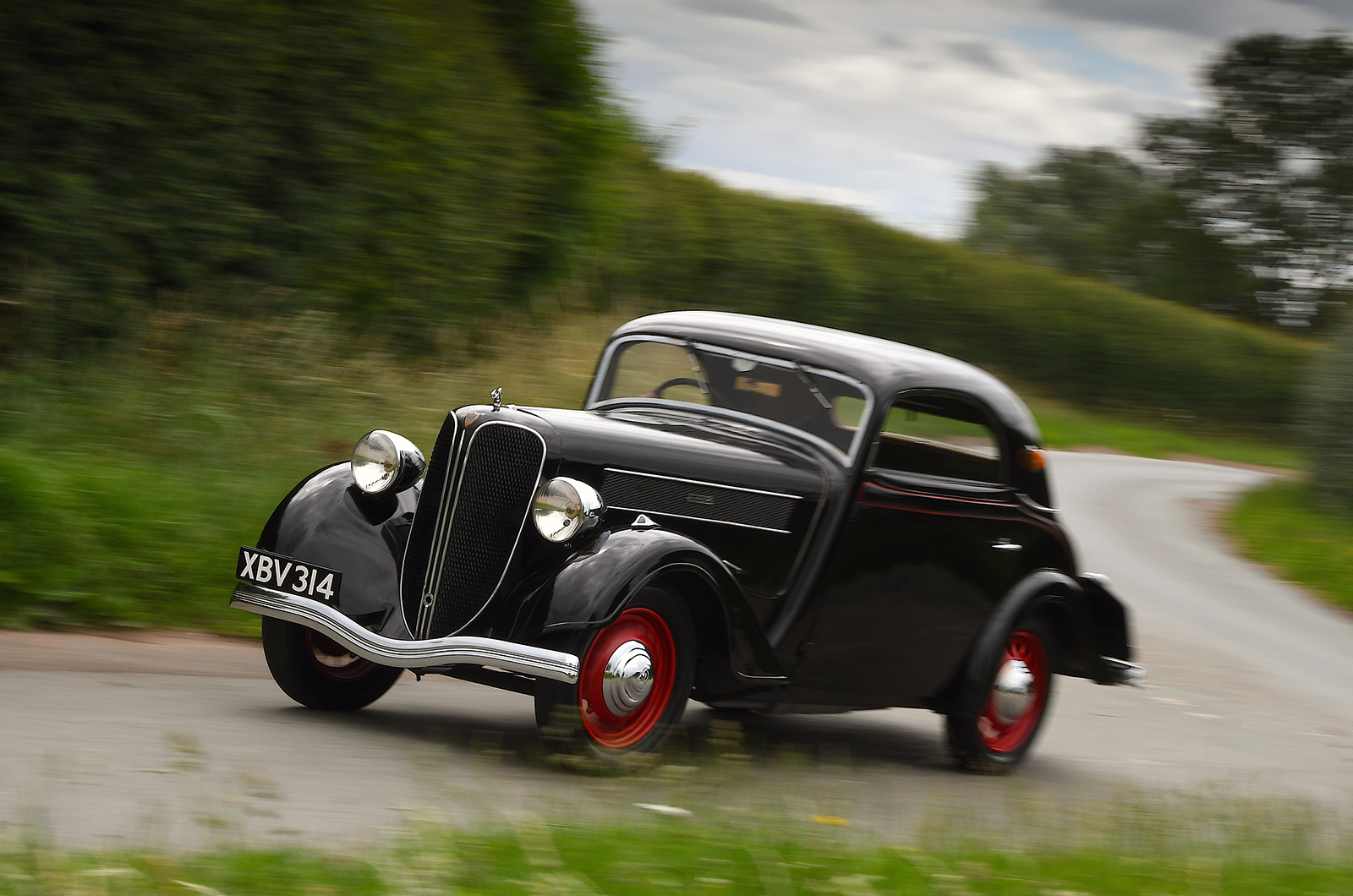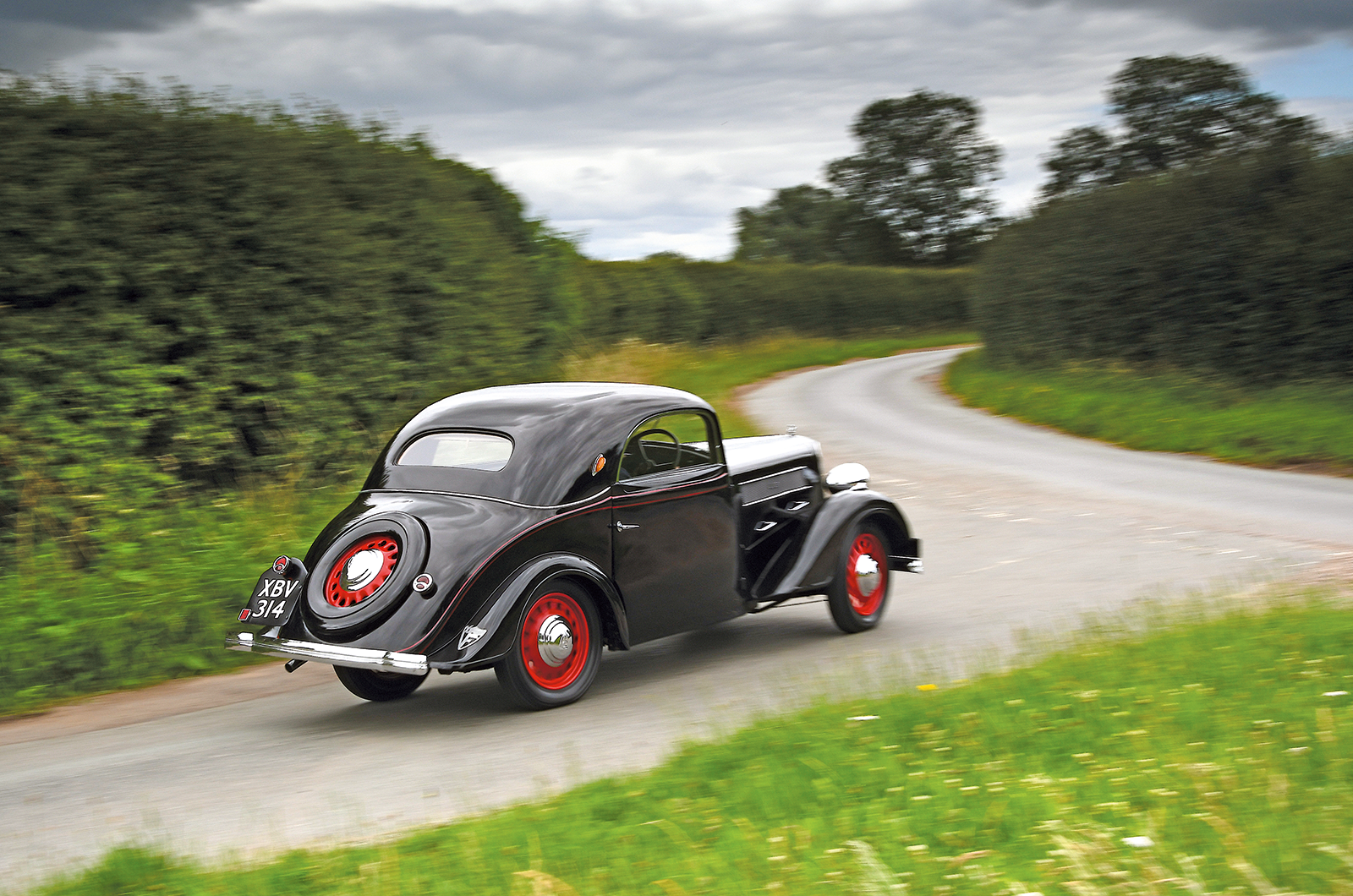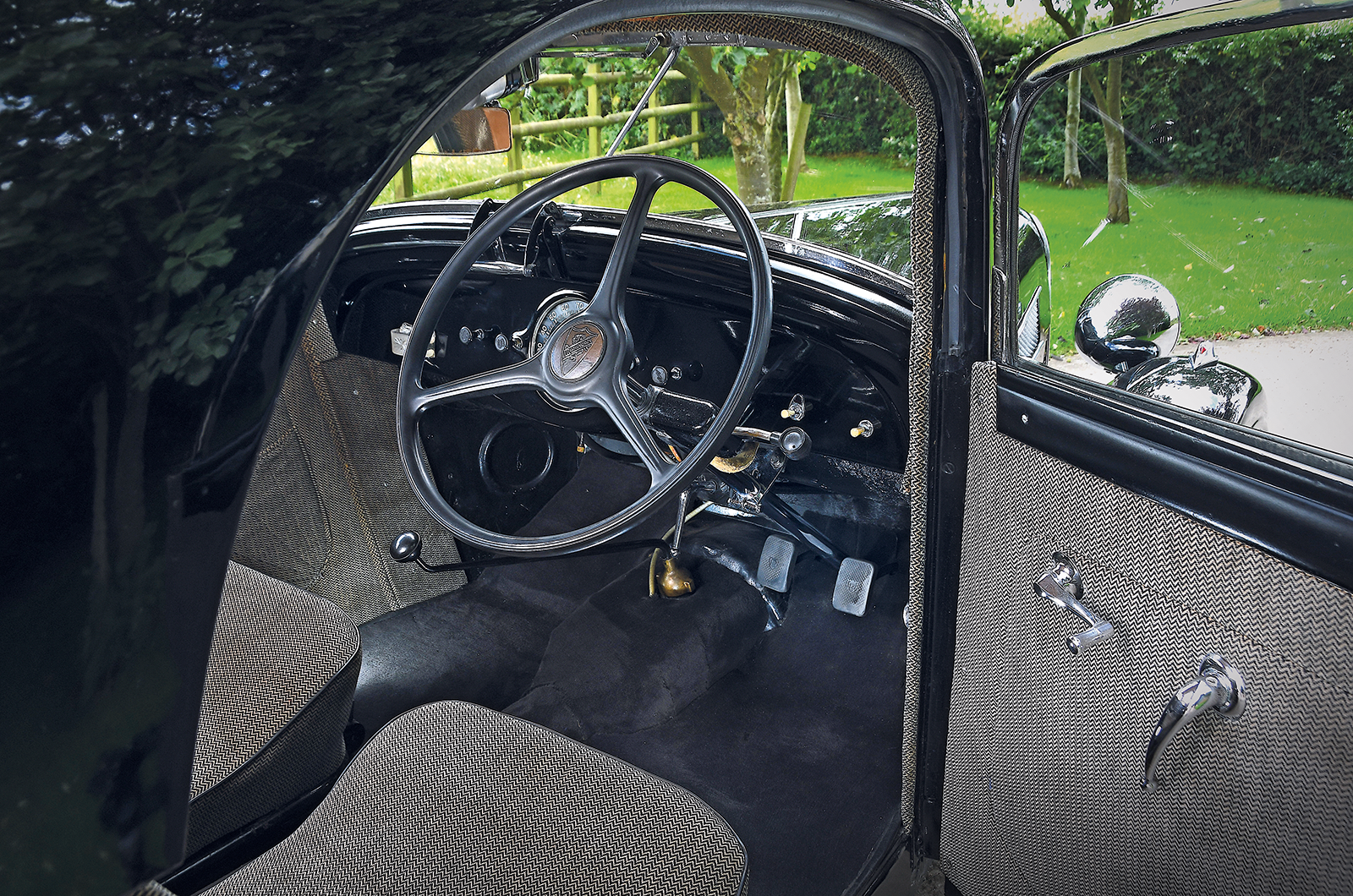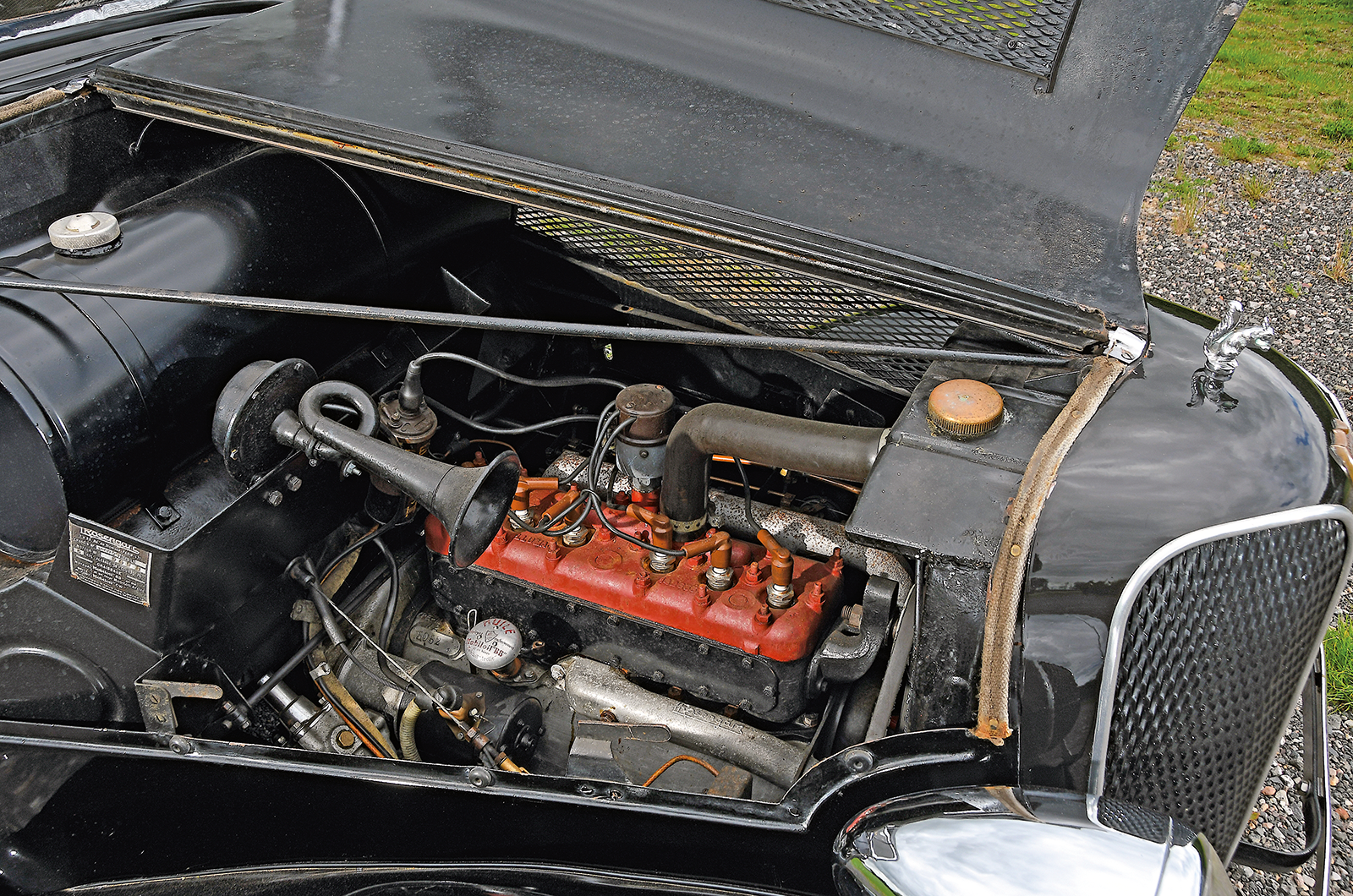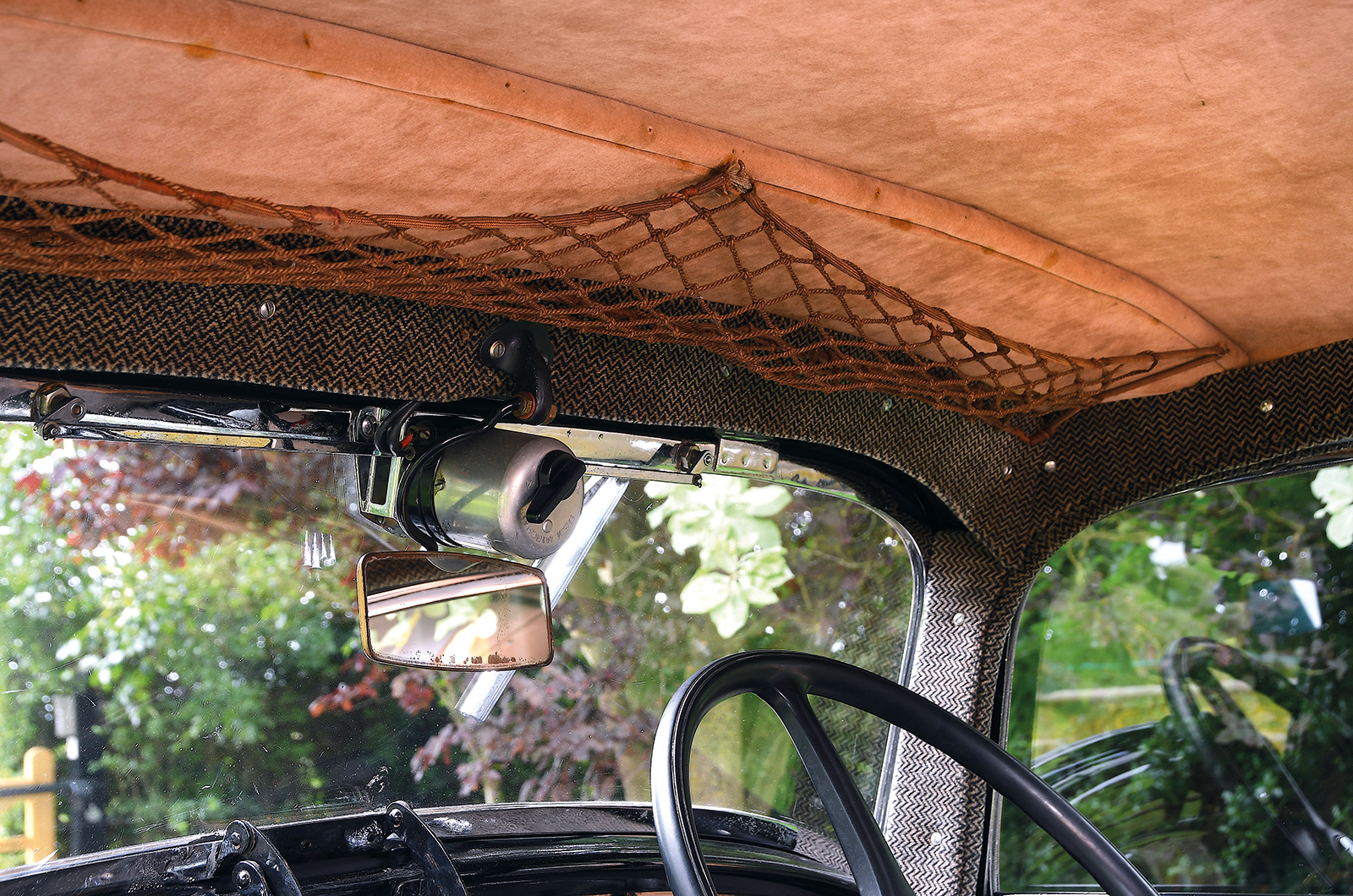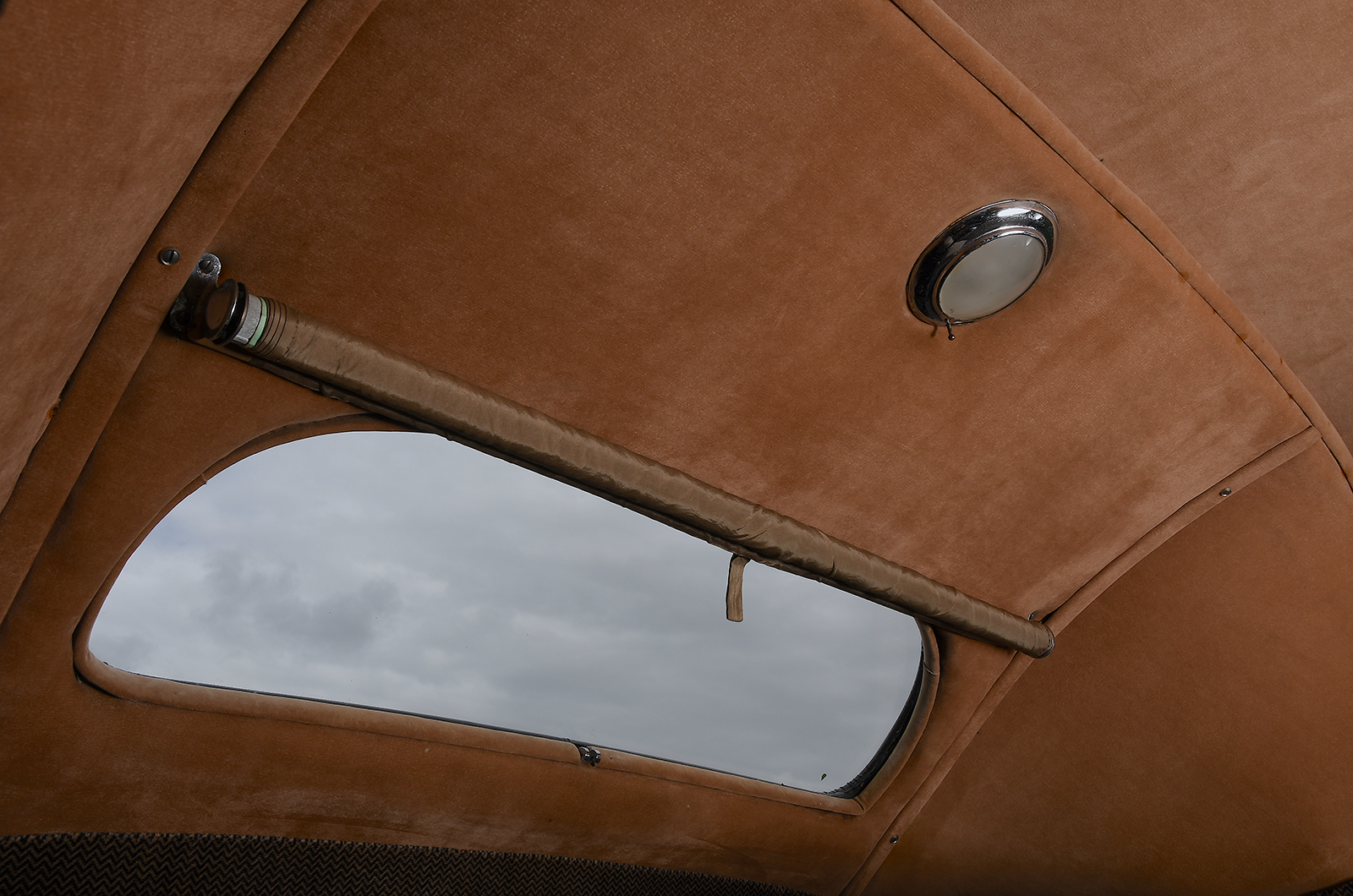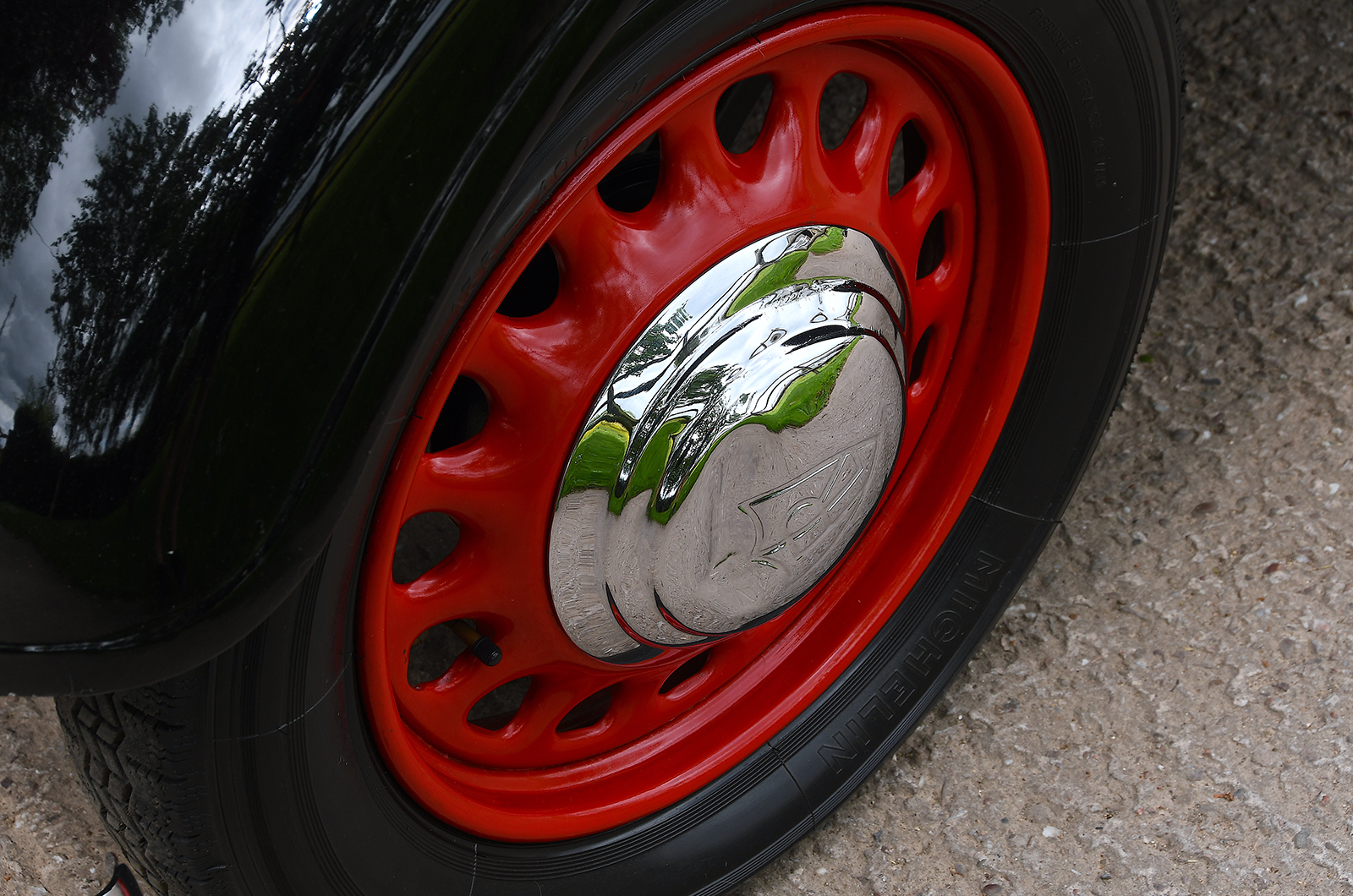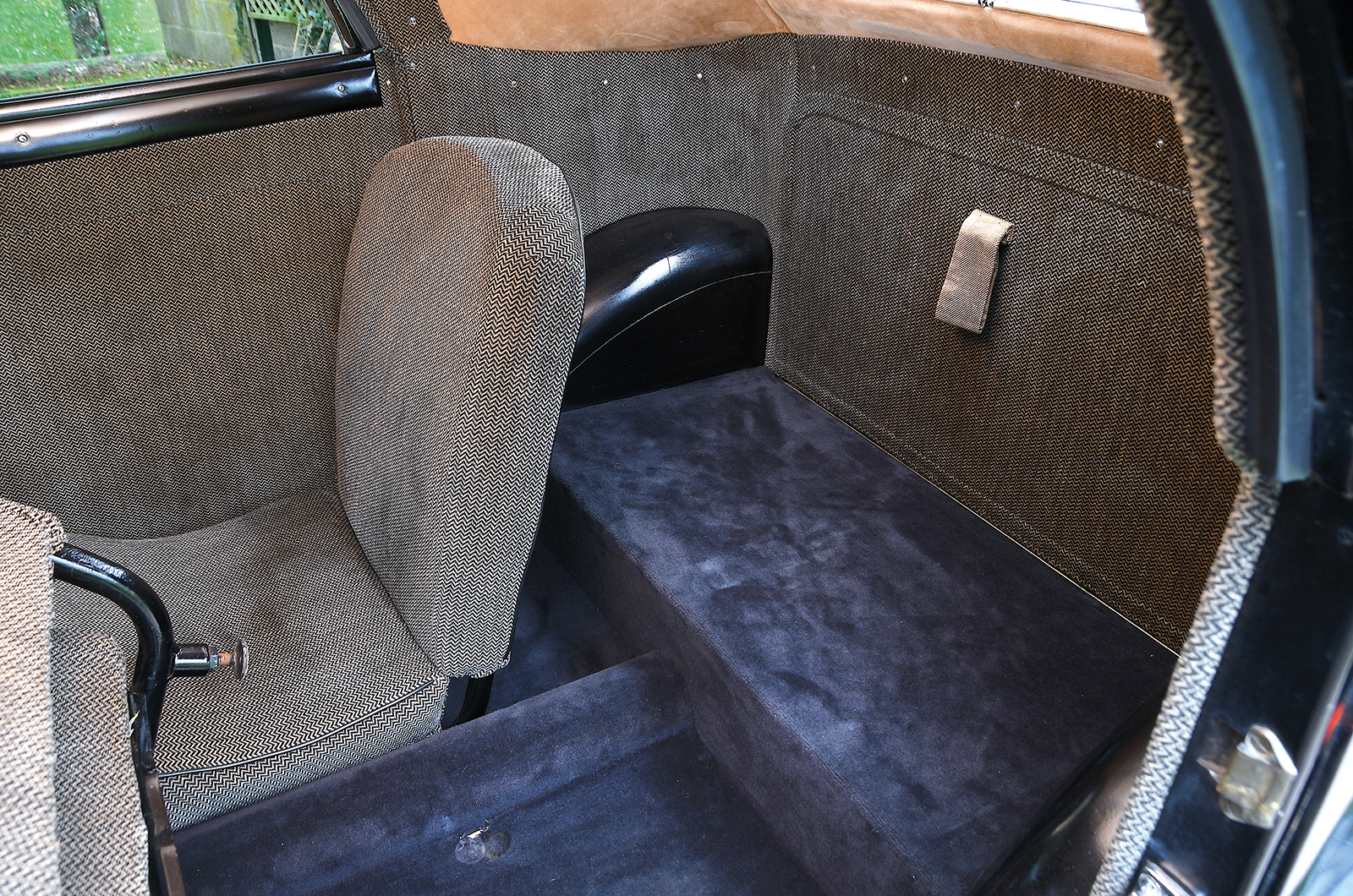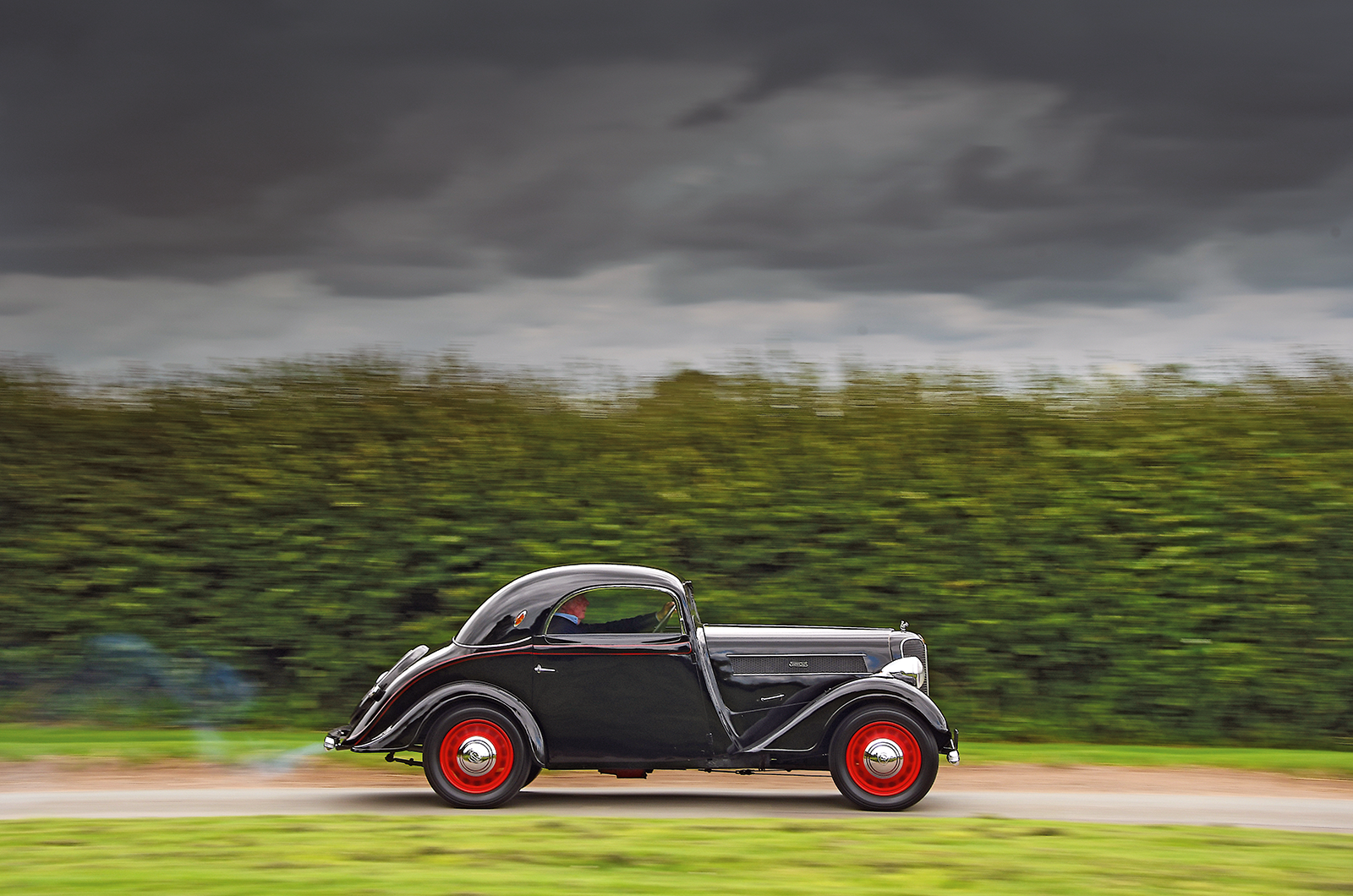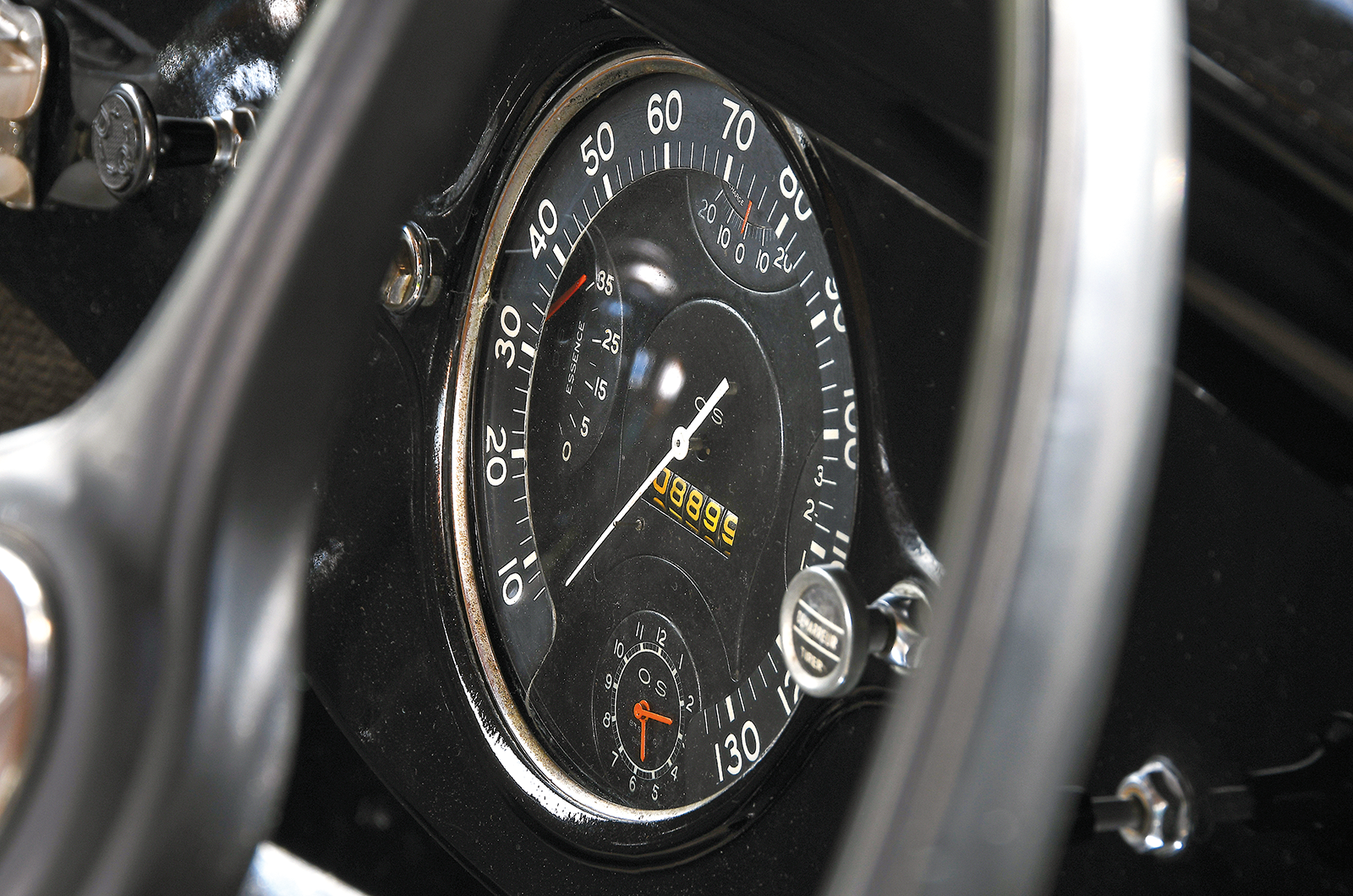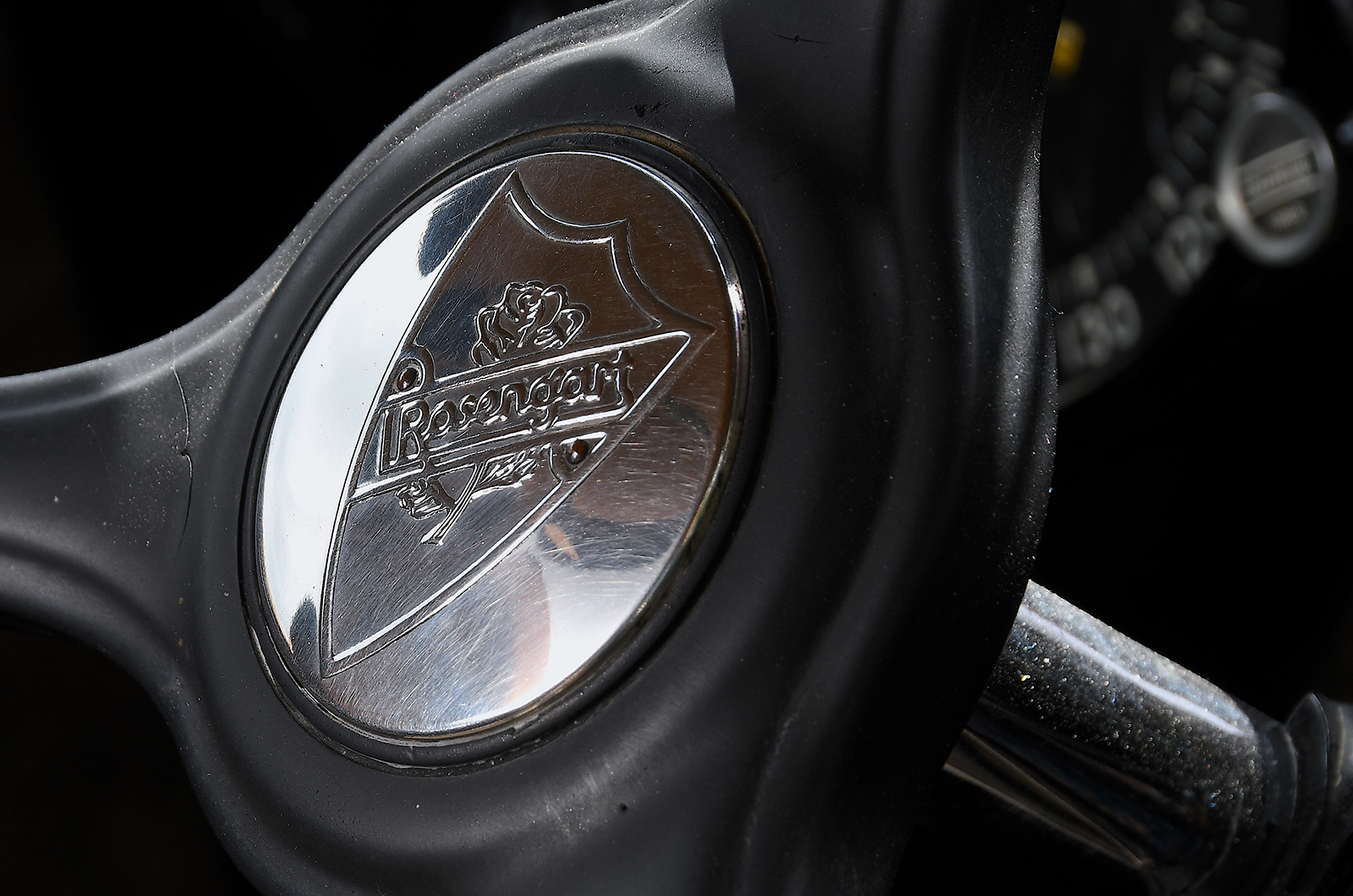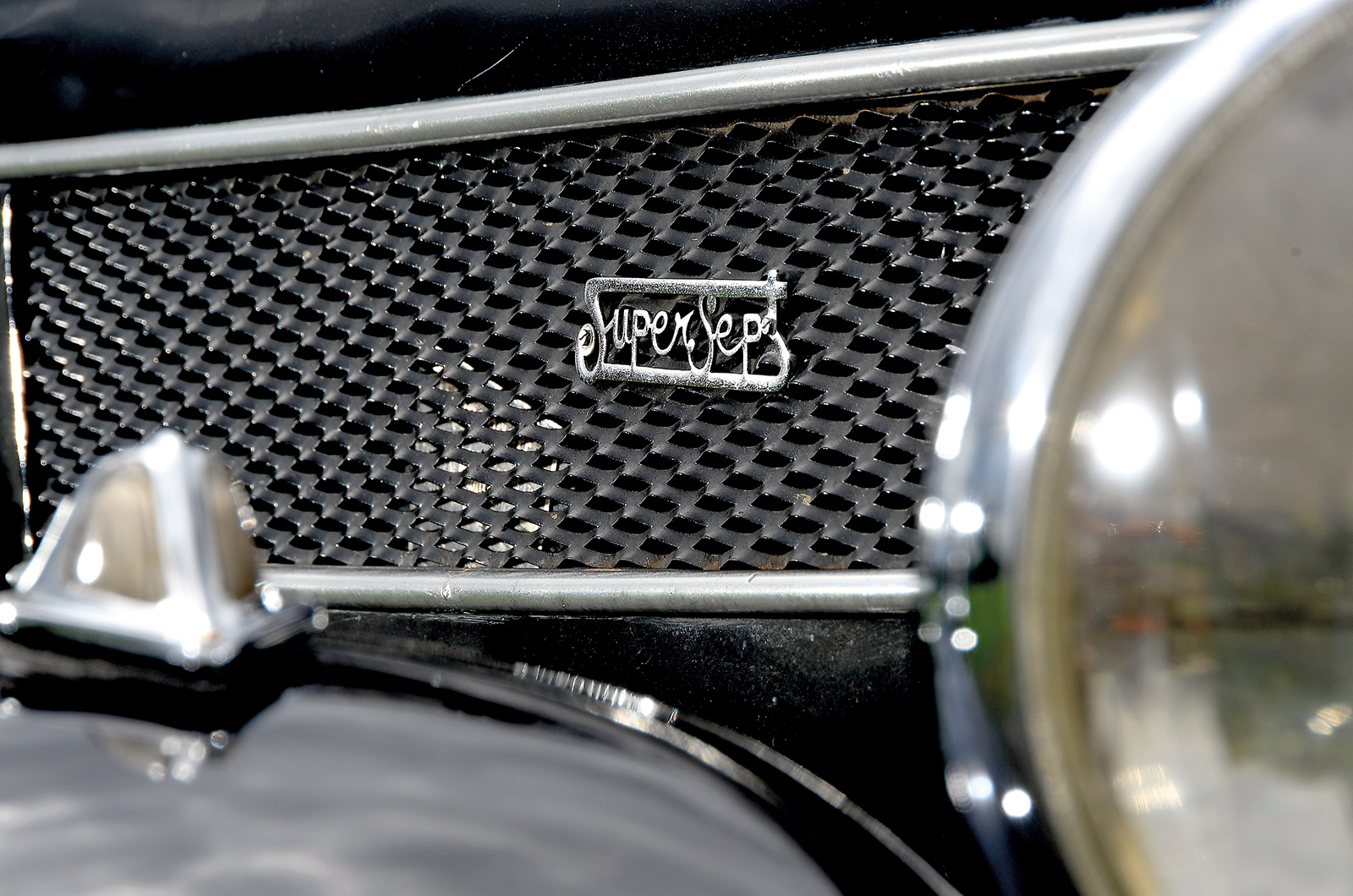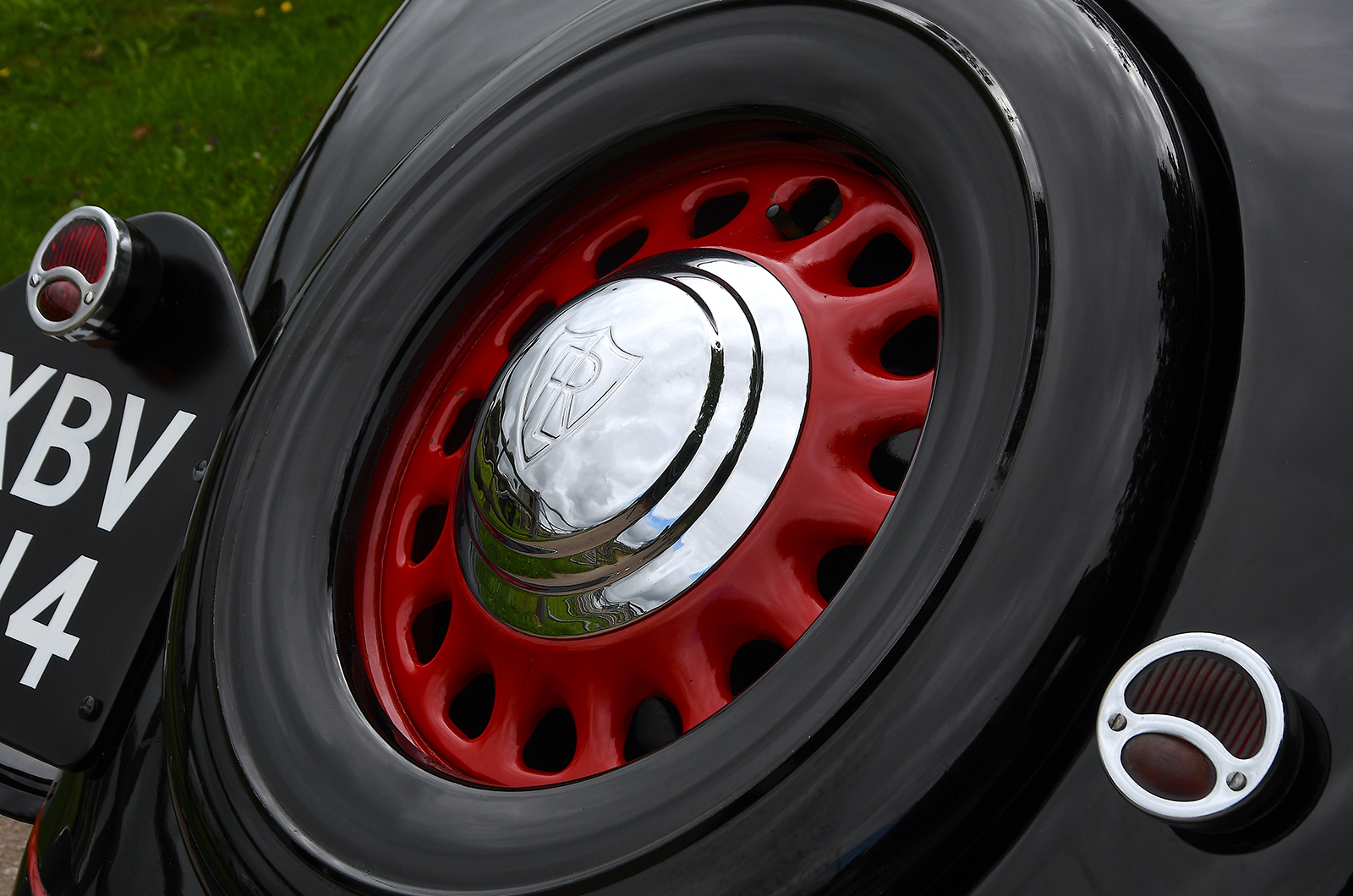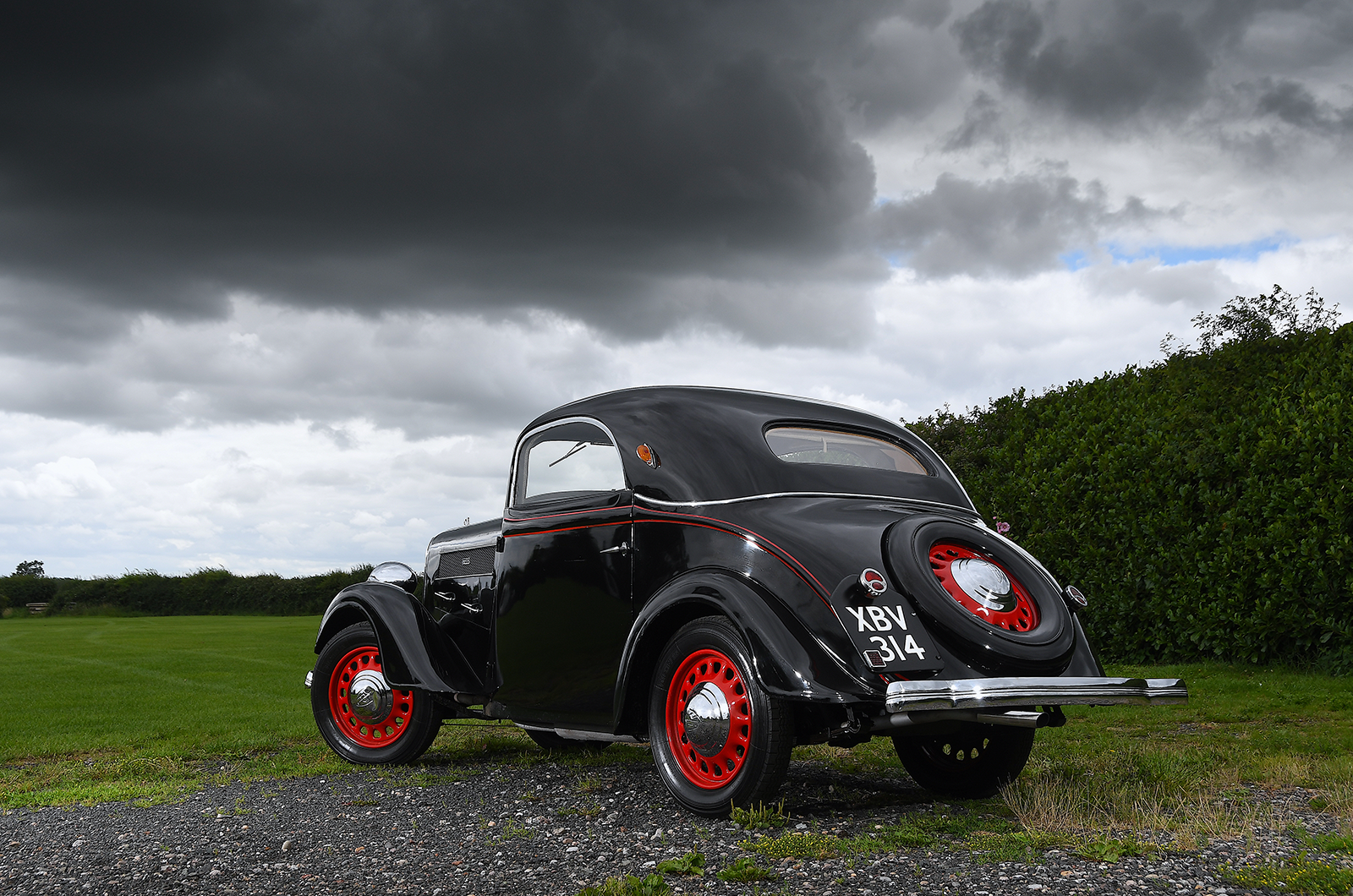A more committed driving style can circumvent this lack of guts; once it’s wound up, gentle gradients need hold no fear, while on the level a coffee-grinder 45-50mph is feasible.
“Rosengart’s claim of the maximum speed being a whisker shy of 70mph is best not contemplated”
To achieve this, though, you need to master the unsynchronised gearbox. Clean changes are possible, but take practice.
“You almost have to triple-declutch, and then it goes in,” comments Whale. At least the clutch is smooth and well-weighted, and a further plus point is that the brakes are surprisingly progressive and adequately effective.
There is little incentive to explore the outer edges of the Rosengart’s performance envelope.
The steering is fluid and genuinely agreeable, with no lost motion to speak of, but that’s where the virtues of the chassis stop.
The ride is choppy at the best of times, with an under-damped front end. On poor roads there’s vicious pitching and directional stability that is foggily approximate.
Typical French combination dial includes a clock within (left); emblem at the centre of the steering wheel
Along with the shakes that are transmitted through the evidently less than rigid body, this teaches you that sporting motoring is not part of the portfolio.
Even on decent surfaces the car can end up dancing all over the road if you’re imprudent enough to push beyond 40mph – it just doesn’t feel safe.
Rosengart’s claim of the maximum speed being a whisker shy of 70mph is best not contemplated.
Recently, a new tank has been fitted, the ignition has been finely adjusted, and the carbs re-jetted.
“It’s transformed,” reports Whale. “Last time I took it out I was rolling along at over 40mph!” So let’s cut the car a bit of slack for being somewhat off-colour when we tried it.
Owner Whale has an interest in French cars
Even if one accepts this, the fact remains that by the standards of the time in France – and these are the only standards that count – the Rosengart SuperSept falls well short of the bar, demanding too much effort for little return.
It was ill-conceived to begin with, and smart looks and canny marketing weren’t enough to conceal the unsaleability at the end of the 1930s of an over-engined and under-engineered rejig of a 1922 Austin Seven.
By then nobody took the 5CV Rosengart seriously, let alone its six-cylinder sister.
This is a rare – and treasured – survivor
In Grand Luxe form the coupé cost 24,710 francs in late 1938, roughly the same as a 7C Traction Avant and nearly 4000 francs more than an eminently presentable Renault Juvaquatre.
Admittedly, Simca’s new coupé version of its Huit came in at 27,900 francs, but there was no need to spend that much on a nifty town car when the same manufacturer offered its licence-built Fiat Topolino, the Simca Cinq, at less than Ffr15,000 in tin-top Luxe format.
Any one of these cars, even the not hugely clever Juvaquatre, would tan the pants off the Rosengart for driveability.
Images: John Bradshaw
READ MORE
Why this is no ordinary Citroën Traction Avant
21 forgotten Peugeot classics
Morris vs Simca: Who says racy tintops were an ’80s thing?
Jon Pressnell
Jon Pressnell is a contributor to Classic & Sports Car
